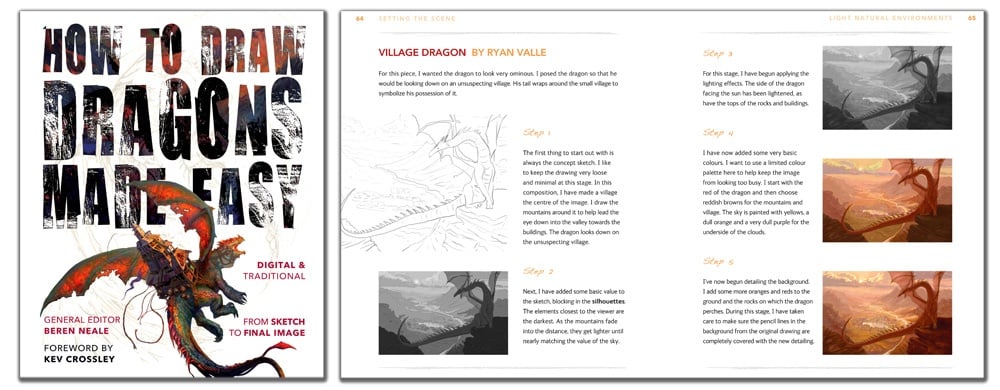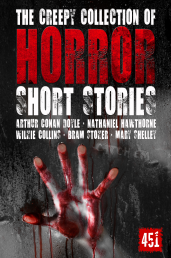Ancient, beautiful and undeniably powerful, dragons in their most common depictions have helped characterize the fantasy world and lend impressive mythological grandeur to the tales that feature them. Dragons are an attention-grabbing component of hero myths in particular, where there has been a pervasive attitude that the defeat of a dragon is a way of proving one’s mettle, that a dragon-like figure or idea must be ‘conquered’ in order to attain a ‘prize’ (usually treasure, or virtue personified in the figure of a maiden).

Dragon-slayers earn the greatest respect, not only in medieval romance (such as Tristan & Isolde) but also among the heroes of antiquity, with Apollo (who slew the earth-dragon Python) and Perseus (who, after having dispatched Medusa, defeated the sea dragon [kētos] to rescue Andromeda). Greek mythology also gives us the tale of Medea charming with her spells and herbs the ‘Kholkian Drakon’ that guards the Golden Fleece. These earlier ‘dragons’ are more a general form of monster, though with definite dreadful qualities that have formed the basis of dragon-lore. The presence of dragons in tales augments the merit of the heroes that oppose them, but what of the dragons themselves? We’re going to take a look at the most memorable dragons from literature, and how they were depicted in all their awesome might. [Caution: Here There Be Spoilers]
Within Christianity, the Legend of St George and his victory against a princess-eating, town-terrorising dragon has greatly influenced the understanding of what a European dragon ‘is’. The association of dragon-like attributes and serpent-like creatures with evil has dominated Christian dogma, and so here it is perhaps best to begin with a dragon that embodies that very idea. The Book of Revelation in the New Testament of the Bible describes a fiery red dragon with seven heads and ten horns, a ‘great dragon’ that, because of its evil, disruptive intent in Heaven was ‘cast out, that old serpent, called the Devil, and Satan, which deceiveth the whole world: he was cast out into the earth, and his angels were cast out with him.’ (Revelations 12). The Great Red Dragon Paintings by William Blake (painted 1805–10) capture the impressive demonic nature of this figure, and for such an important figure to be conveyed as a ‘dragon’ it is clear that dragons are considered the pinnacle of threatening splendour. Blake also illustrated John Milton’s epic poem Paradise Lost (1667), which, through a gloriously rich characterization of Satan, charts the activites of Pandæmonium (the parliament in Hell formed by the rebel angels after this point), and the temptation of Adam and Eve by the ‘serpent’.
The Dragon from Beowulf
As the oldest surviving heroic poem written in the English language, Beowulf introduces what could be considered the very first dragon-slayer, as well as a vision of a ‘dragon’ that would influence many later depictions of dragons. Incorporating themes from Norse folklore, and fiercer than the dragons found in the legends of Saints, here is our typical hoard-guarding dragon.
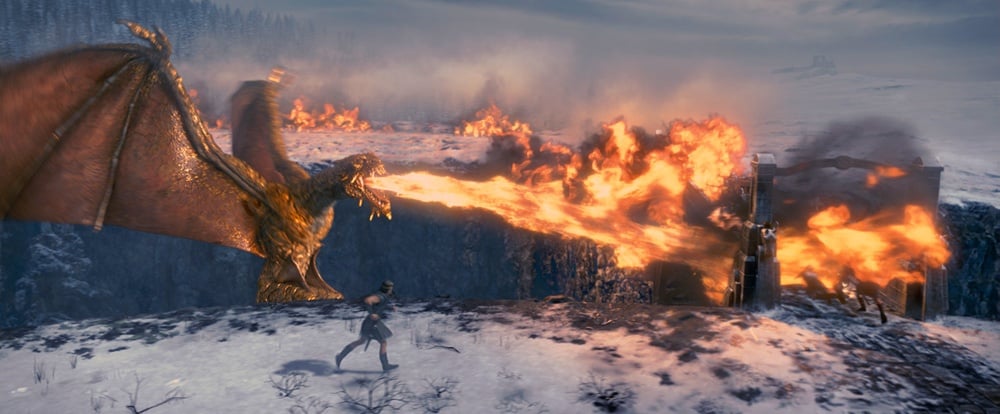
It appears at the end of the poem, which ends with Beowulf’s defeat in battle with the dragon. Beowulf has already conquered two monsters by this point (Grendel, and then more terrifyingly, Grendel’s Mother), so the fearsome power of this fire-breathing, utterly destructive creature is particularly evident in the way it is able to attack Beowulf severely three times before itself being vanquished.
Errour from 'The Faerie Queene'
Continuing the moral associations of dragons/serpents/worms with sinful temptations, the first book of this allegorical 1590 epic poem by Edmund Spenser features the Knight Redcrosse encountering a dragon. The books are rife with metaphor: the ‘wandering’ journey of this knight errant in his quest for ‘Holiness’ involves finding the right ‘path’, avoiding the muddle and confusion of overgrown, uncontrolled landscapes and defeating various monsters to pass tests of courage and virtue. This Christian representative is literally armed with his Christian belief in these circumstances (his shield is emblazoned with his cross, also the symbol of St George), and his early defeat of the symbolic dragon-like form ‘Errour’ allows him to be united with the innocent lady Una (‘Truth’).
The Jabberwock
Some light relief in the form of nonsense poetry, Lewis Carroll’s 'The Jabberwocky' nevertheless features a hero character holding a ‘vorpal’ sword aloft and slaying his ‘manxome’ foe. Although not explicitly a ‘dragon’ (though as we have already seen the definitions of this vary considerably), Tenniel's illustration of the creature did interpret it as dragon-like, and the poem describes The Jabberwock as having ‘eyes of flame’, with a warning of its dangerous qualities that sounds very much like the mythical dragon we have come to recognize: ‘Beware the Jabberwock, my son! / The jaws that bite, the claws that catch!’. Part of Carroll’s 1831 Through the Looking-Glass, and What Alice Found There, this dreamlike poem is discovered by Alice to be in ‘mirror-writing’, and its many nonsense words add to the mystery and legendary nature of the dragon-like creature, as we cannot ever grasp the full meaning – and can only project our own imagination onto – the words that describe its appearance, behaviour and actions.
Fido, 'The Last of the Dragons'
Edith Nesbit’s 1925 short story ‘The Last of the Dragons’ is a wonderful reversal of the traditional hero-defeats-fearsome-dragon-to-rescue-innocent-maiden archetype. The dragon in this children’s story likes to be called 'Dear' and enjoys drinking petrol. At first, he simply wants to be left alone, and not be used as a pawn in the theatrical human schemes that have lured all his ancestors out, supposedly to threaten a princess, before meeting their deaths. Fortunately, the lead female, refusing to be tied up and helpless, concocts a plan with her ‘rescuer’ and the dragon ends up happily part of the community. The story ends when the dragon, fearful of being considered outdated, is transformed into the first modern aeroplane. This crossover of creatures from ancient legend and modern technology, possibly bred from the fear of the unknown in mythical monsters and innovative technological advances alike, can be seen again in Ray Bradbury’s short story ‘The Dragon’, where knights attack a giant fire-breathing monster, but their dragon is revealed to be a modern steam engine.
Smaug
This dragon barely needs an introduction, so memorable in people’s minds has it been since its creation by Tolkien for his 1937 book The Hobbit. Heavily influenced by Beowulf’s dragon, Smaug is another magnificently powerful creature of ancient times, guarding its heaps of treasure and even anthropomorphically able to talk and fall victim to greed and vanity. Bilbo Baggins, speaking in riddles and flattering the fearsome creature, is able to trick the dragon and discover its weak point, thereby enabling its defeat later on and ridding the town of its terrorizing reign.
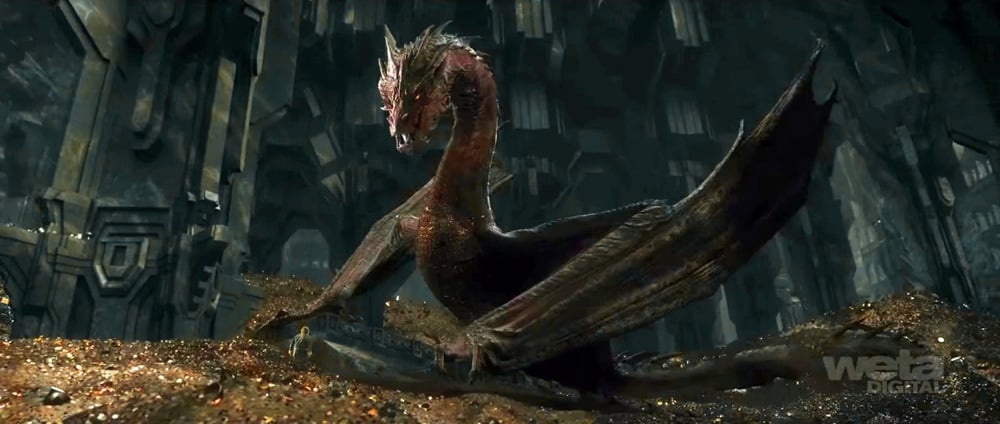
Eustace the Dragon
Eustace Clarence Scrubb, like many of C.S. Lewis’s other characters in the Chronicles of Narnia, is someone that begins with a number of unattractive qualities (he is self-centered and arrogant), and then experiences moral development in the fantasy realm as the tale progresses. This occurs in Voyage of the Dawn-Treader (1952), when the ship Eustace is sailing on in Narnia stops off at an island. He shirks duties by wandering off, and, watching a dragon die, falls asleep in its cave of treasure and wakes to find himself transformed into a dragon. After difficult communication with his companions to explain what happened, Eustace the Dragon is very helpful while the crew repair the ship, and is finally ‘un-dragoned’ by the Good creator/king Aslan: Aslan tears the scales like snake-skin from Eustace’s body in a symbolic rebirth where Eustace has become better-natured and appreciative of his friends and circumstances.
Harry Potter’s Hungarian Horntail
J.K. Rowling’s creations cannot fail to be mentioned here, as dragons feature prominently in the menagerie of classical, folkloric, mythical and fantastical creatures that exist in the magical world of Harry Potter. In Harry Potter and the Goblet of Fire, Harry must defeat the Hungarian Horntail in the first part of the Triwizard tournament, to retrieve the Golden Egg and progress onto the next stage (i.e. pass the test and achieve the treasure). This lizard-like dragon is fire-breathing, extremely vicious, carnivorous, and as dangerous in flight as on the ground. Although Rowling describes different species including a ‘Swedish Short-Snout’, a ‘Common Welsh Green’, and a ‘Chinese Fireball’, the behaviour of her dragons conform to traditional archetypes: separate from the human world and dangerous as a result, as well as effective guards (dragons also protect vaults in the depths of the wizarding bank Gringotts). Also worthy of a mention is Hagrid’s pet, the baby Norwegian Ridgeback dragon Norbert in The Philosopher’s Stone. Even in the world of magic, it is apparent in this very first book of the series that dragons are considered dangerous beasts, as possession of a dragon is considered illegal.
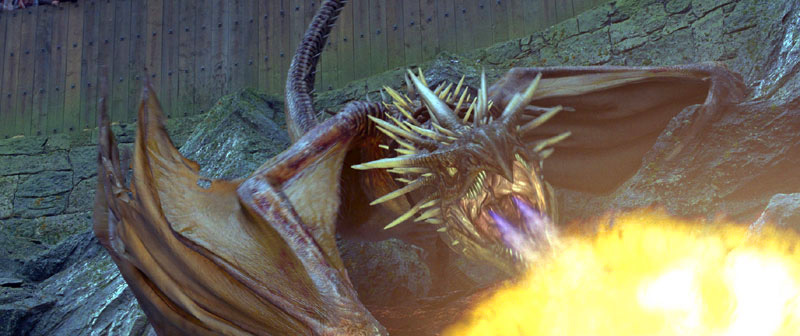
So there we have a selection of 8 of the most iconic dragons that have graced the pages of western literature… the focus was on individual dragon figures that have stood out to us, though it seems criminal not to at least mention the collective dragons that colour the worlds of George RR Martin’s A Song of Ice and Fire series, Terry Pratchett’s Discworld (and its array of Noble dragons, Swamp dragons and Moon dragons), and the amoral dragons of Ursula K. Le Guin’s magical land of Earthsea.
Do you love dragons as much as us? Learn to draw your own versions of these fabulously impressive creatures in our book How to Draw Dragons Made Easy [ISBN: 9781783616527] – and make them as frightening or friendly as you like! Alternatively, we also have a book on other artists' Dragon Art – take a look here.
